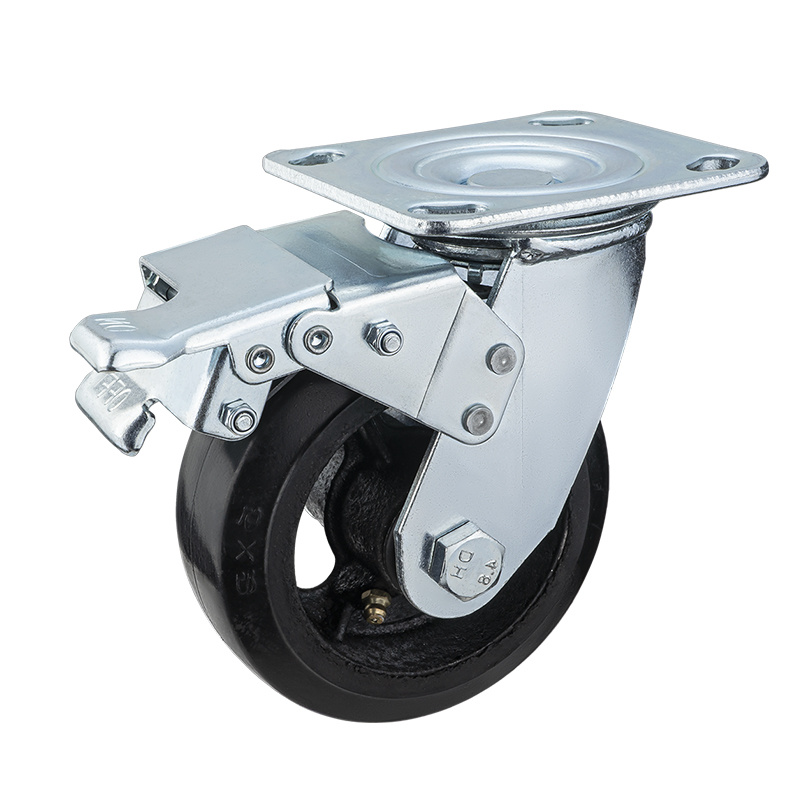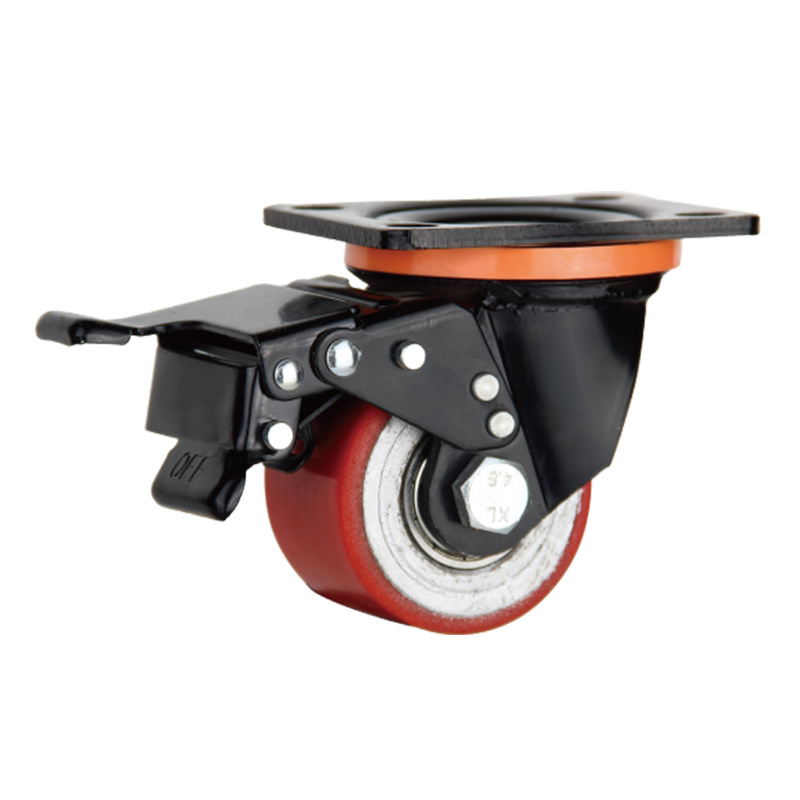BLOG
Comparing Different Types of Medium Duty Casters for Your Needs
2025-07-19
Introduction to Medium Duty Casters
In the realm of industrial and commercial applications, the importance of **medium duty casters** cannot be overstated. They play a crucial role in facilitating smooth movement and enhancing operational efficiency. From warehouses to workshops, these casters are engineered to handle specific weight capacities and a variety of conditions. In this guide, we will d
Introduction to Medium Duty Casters
In the realm of industrial and commercial applications, the importance of **medium duty casters** cannot be overstated. They play a crucial role in facilitating smooth movement and enhancing operational efficiency. From warehouses to workshops, these casters are engineered to handle specific weight capacities and a variety of conditions. In this guide, we will delve into the different types of medium duty casters available, providing you with the insights necessary to make an informed decision tailored to your unique needs.
Understanding Medium Duty Casters
Medium duty casters are typically rated for load capacities ranging from **150 to 600 pounds**. They are designed to support a wide array of applications, including furniture, carts, and trolleys. These casters are ideal for environments that require a balance of stability and mobility. By understanding their characteristics, users can select the appropriate casters that suit their requirements.
Key Features of Medium Duty Casters
When considering medium duty casters, it's essential to be aware of several key features that can influence your choice:
Weight Capacity
The weight capacity of a caster is one of the most critical factors to consider. Choosing a caster that exceeds your load requirements is vital for ensuring safe and efficient operation.
Material Composition
Casters are made from various materials, including rubber, polyurethane, and metal. Each material has unique properties that affect durability, grip, and floor protection.
Wheel Size
Wheel size impacts the caster's performance. Larger wheels can navigate over obstacles more easily, while smaller wheels are better suited for smooth surfaces.
Swivel vs. Rigid Casters
Swivel casters offer multidirectional movement, while rigid casters provide stability in a straight line. The choice between the two depends on the intended application.
Types of Medium Duty Casters
Understanding the different types of medium duty casters is crucial for selecting the right one for your specific needs. Below, we will compare several popular options.
1. Rubber Casters
Rubber casters are favored for their **shock-absorbing** properties and noise reduction. They are ideal for environments where quiet operation is essential, such as hospitals and libraries. Additionally, rubber is gentle on floors, preventing scratches and damage.
2. Polyurethane Casters
Polyurethane casters combine the benefits of rubber and hard materials. They offer excellent floor protection while providing the durability necessary for heavy loads. These casters excel in various settings, including warehouses and factories, due to their resistance to wear and chemicals.
3. Steel Casters
Steel casters are known for their strength and durability, making them suitable for heavy-duty applications. They are typically used in environments that require robust performance, such as manufacturing plants. However, steel casters may cause floor damage if used on sensitive surfaces.
4. Nylon Casters
Nylon casters are lightweight yet sturdy, making them a popular choice for office furniture and light-duty equipment. They offer excellent resistance to chemicals and are easy to maintain. However, they may not be the best option for uneven surfaces.
Factors to Consider When Choosing Medium Duty Casters
Selecting the right medium duty caster requires careful consideration of several factors to ensure optimal performance.
1. Load Requirements
Assess the total weight of the objects you plan to move. Ensure that the chosen casters can comfortably support the weight without compromising safety.
2. Floor Compatibility
Consider the type of flooring the casters will be used on. Hard surfaces may require different caster materials than carpeted or uneven flooring.
3. Environment and Conditions
Environmental factors, such as exposure to moisture, chemicals, or extreme temperatures, can impact caster performance. Choose materials that can withstand these conditions for longevity.
4. Maneuverability Needs
Think about how often you will need to change direction. Swivel casters can enhance maneuverability in tight spaces, while rigid casters provide stability for straight-line movement.
Installation and Maintenance of Medium Duty Casters
Proper installation and maintenance are crucial for ensuring the longevity and performance of medium duty casters.
1. Installation Guidelines
Follow these steps for proper installation:
- **Select the Right Size**: Ensure that the mounting plate size matches the equipment.
- **Align the Casters**: Position the casters evenly to maintain balance.
- **Secure with Screws**: Use appropriate screws or bolts to secure the casters tightly.
2. Regular Maintenance Tips
To keep your casters in optimal condition, consider these maintenance practices:
- **Inspect Regularly**: Check for signs of wear and tear, such as cracks or flat spots.
- **Clean the Wheels**: Remove debris that may hinder movement.
- **Lubricate Bearings**: Periodically lubricate the bearings to ensure smooth operation.
FAQs About Medium Duty Casters
1. What is the weight limit of medium duty casters?
Medium duty casters typically support loads ranging from 150 to 600 pounds, depending on the specific model and material.
2. Can I use rubber casters on concrete floors?
Yes, rubber casters are suitable for concrete floors as they provide excellent grip and floor protection.
3. How do I know if I need swivel or rigid casters?
If you need to navigate tight spaces or change direction frequently, swivel casters are ideal. For straight-line movement, rigid casters are more appropriate.
4. Are polyurethane casters better than rubber ones?
Polyurethane casters offer a balance of durability and floor protection, making them more versatile than rubber in many applications.
5. How often should I maintain my casters?
Regular inspections should be conducted monthly, with cleaning and lubrication performed as needed based on usage frequency.
Conclusion
Choosing the right medium duty casters is essential for ensuring efficiency and safety in your operations. By understanding the various types of casters available and the factors that influence your selection, you can make an informed choice that meets your specific needs. Whether you require the shock absorption of rubber, the durability of steel, or the floor protection of polyurethane, each type offers unique benefits suitable for different applications. Regular maintenance and proper installation will ensure that your casters perform optimally, contributing to a smoother and more productive workspace.
Key words:
RELATED NEWS
Understanding Market Trolley Casters: A Guide for Professionals
2025-09-06
When it comes to enhancing mobility in various applications, market trolley casters play a pivotal role. These casters are designed to facilitate the smooth movement of trolleys, carts, and other equipment in retail, logistics, and industrial settings. Understanding the fundamentals of market trolley casters is essential for professionals in the hardware tools and components industry, particularly
How Industrial Trolley Casters Can Improve Productivity in Manufacturing
2025-08-30
How Industrial Trolley Casters Can Improve Productivity in Manufacturing
Table of Contents
What are Industrial Trolley Casters?
Importance of Casters in Manufacturing
Types of Industrial Trolley Casters
Benefits of Using Industrial Casters
How Casters Improve Workflow
Choosing the Right Caster for Your Needs
Maintenance Tips for Casters
Future Trends in Industrial
Understanding Heavy Duty Leveling Casters: A Comprehensive Guide for Professionals
2025-08-23
Heavy duty leveling casters are critical components in many industrial and commercial applications, offering a perfect blend of mobility and stability for heavy loads. These casters are designed to handle significant weight while allowing for precise adjustments in height, making them an ideal choice for a variety of settings, from warehouses to manufacturing floors.
One of the primary advantages








